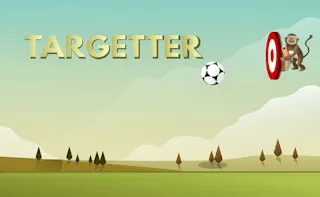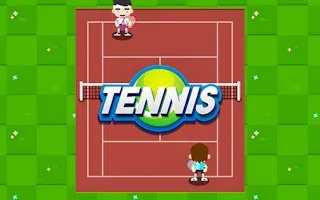Ball Games
57 games in total. Page 1 of 2
Ball Games: A World of Fun, Fitness, and Competition
Ball games have a universal appeal, captivating players and fans from all walks of life. Whether it’s a casual kick of a soccer ball in the park or a high-stakes basketball match in a stadium, ball sports are deeply embedded in cultures worldwide. This category of games offers not only entertainment but also an excellent way to maintain physical fitness, improve coordination, and foster teamwork. On PunyGame, we celebrate a variety of ball games, from simple and fun to challenging and competitive. In this article, we dive into the rich world of ball sports, exploring their types, benefits, and growing popularity.The Universal Appeal of Ball Games
Ball games are popular because they are accessible to people of all ages and skill levels. From young children learning to throw a ball to professional athletes competing in major tournaments, the simplicity of a ball makes it a fundamental element of many sports. The ease of participation and the thrill of competition are key reasons why ball games have become a staple in both outdoor and indoor recreation. Popular ball sports include soccer, basketball, baseball, tennis, and volleyball. Each of these games has its own unique set of rules, objectives, and skills, making them exciting and dynamic. Soccer, for example, is enjoyed by over 4 billion people globally and is renowned for its fast-paced action and strategic play. Similarly, basketball is beloved for its high-energy atmosphere, where agility, speed, and teamwork are essential.The Evolution of Ball Games
The history of ball games dates back thousands of years. Ancient civilizations like the Mayans played ritualistic ball games, such as the Mesoamerican Ballgame, which was not only a sport but also a religious event. The ancient courts, still visible today, reveal how seriously these games were taken, often symbolizing life, death, and the cosmic cycles of renewal. In modern times, ball games have evolved significantly. Sports like baseball and soccer originated in the 19th century and have since become global phenomena. The development of leagues, international tournaments, and dedicated fan bases has turned ball sports into multi-billion-dollar industries. The advancement of technology has also played a role, allowing for innovations in equipment, training, and broadcasting, further boosting the popularity of these games.Physical and Mental Benefits of Playing Ball Sports
One of the biggest advantages of ball sports is their ability to promote physical fitness. Whether you're kicking, throwing, or catching, ball games engage various muscle groups and improve cardiovascular health. Sports like soccer and basketball demand endurance, agility, and strength, offering a full-body workout that enhances physical stamina and coordination. Beyond physical health, ball games also offer mental benefits. Playing a game that requires quick decision-making and strategy, such as tennis or volleyball, can boost cognitive function. Furthermore, the social aspect of team ball sports helps foster communication skills, build teamwork, and create lasting friendships. These social interactions can significantly improve mental well-being, offering players a sense of belonging and community.Types of Ball Games: From Solo Play to Team Competitions
Ball sports can be classified into different categories based on the number of players and the type of gameplay involved. Team ball sports, such as soccer, basketball, and volleyball, require cooperation and coordination between teammates to achieve a common goal. These sports teach players the importance of collaboration, strategy, and trust. On the other hand, individual ball sports, like tennis, golf, and bowling, focus on personal skill and mental resilience. These sports allow individuals to challenge themselves, develop discipline, and improve concentration. While they may not have the same level of team dynamics, individual ball sports are equally competitive and rewarding. Some ball games blend both team and individual elements. For example, tennis can be played as both a solo sport or in doubles, combining personal performance with team cooperation. Similarly, golf tournaments often feature team-based events where individual scores contribute to the overall result.The Role of Ball Games in Physical Education and Recreation
Ball games are a critical component of physical education programs in schools around the world. They help students develop essential motor skills, hand-eye coordination, and a healthy sense of competition. Teachers use ball games not only to engage students in physical activity but also to teach important life skills, such as teamwork, leadership, and fair play. In addition to their role in education, ball games are a popular form of recreation for people of all ages. From neighborhood parks to professional sports arenas, ball games provide a fun, engaging way for individuals and groups to stay active. Whether it’s a casual game of kickball at a family picnic or an organized community soccer league, ball sports offer endless opportunities for social interaction and physical activity.Innovation and the Future of Ball Games
As technology continues to evolve, so too does the world of ball games. Modern advancements in sports equipment have led to the creation of safer, more durable balls designed to enhance performance. High-tech sensors embedded in balls can now track speed, distance, and impact, providing valuable insights for both amateur and professional athletes. Additionally, the rise of virtual reality and eSports has introduced a new dimension to ball games. Virtual sports simulators allow players to practice their skills in realistic, immersive environments without leaving their homes. Meanwhile, eSports tournaments for games like Rocket League, which combines cars and soccer in a digital arena, are drawing millions of viewers worldwide. Ball games, whether traditional or digital, will continue to play an essential role in physical fitness, entertainment, and social connection. Their universal appeal ensures that they remain a beloved pastime for generations to come, constantly adapting to meet the interests and needs of players in an ever-changing world.PunyGame © 2022. All rights reserved.



































